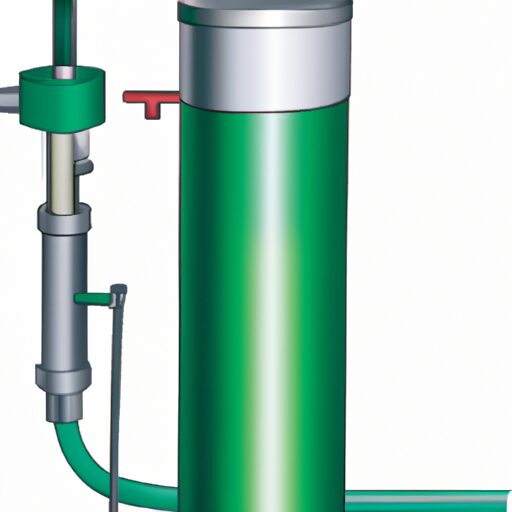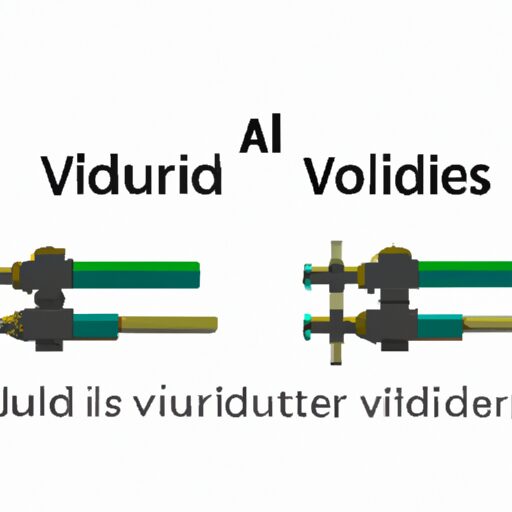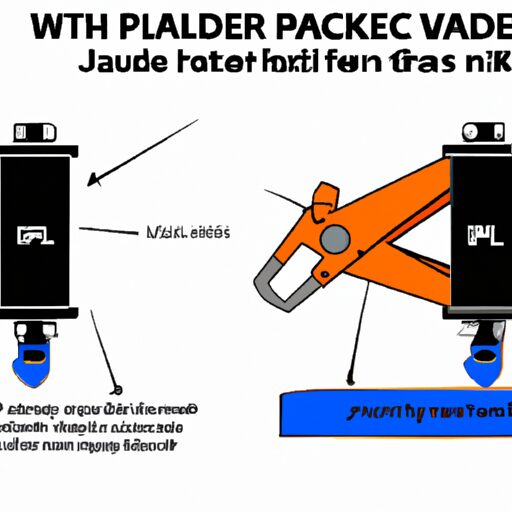How Do You Fill A Porta Power With Hydraulic Fluid
The process of filling a porta power with hydraulic fluid involves several steps that must be followed meticulously to ensure proper functioning. This article will provide a detailed guide on how to fill a porta power with hydraulic fluid, using an academic style of writing that is objective, impersonal, and eliminates personal pronouns.
To grab the attention of the audience, let us embark on a journey where we explore the intricacies of this technical task. Imagine yourself in a workshop or construction site, faced with the challenge of replenishing the hydraulic fluid in your porta power system. With precision and attention to detail, you set out to gather the necessary tools and materials for this task. Each step will be carefully explained, leaving no room for ambiguity.
This article aims to cater to an audience seeking understanding by providing technical information in a concise yet comprehensive manner. By following these guidelines, readers will gain the knowledge required to successfully fill a porta power with hydraulic fluid while ensuring optimal performance.
Gather the Necessary Tools and Materials
To begin the process of filling a porta power with hydraulic fluid, it is essential to gather the appropriate tools and materials required for this task. The following tools are needed: a funnel, clean rags or towels, and a container to catch any excess fluid. Additionally, it is necessary to have hydraulic fluid specifically designed for porta powers.
Before proceeding with the actual filling process, it is important to ensure that the porta power is clean and free from any debris or contaminants that may affect its performance. This can be done by following these steps: Firstly, wipe down the exterior of the porta power using a clean rag or towel to remove any dirt or dust. Secondly, inspect the hoses and fittings for any signs of damage or leaks. If any issues are detected, they should be addressed before proceeding further.
By gathering the necessary tools and materials outlined above and cleaning the porta power as described, you will be ready to proceed with locating the filling point on the porta power. This step will allow you to continue with filling it appropriately without risking any potential complications during this process.
Locate the Filling Point on the Porta Power
The filling point on the porta power can be located by identifying the specific area where the hydraulic system receives its necessary supply. This is typically indicated by a cap or plug that can be unscrewed to access the reservoir. It is important to note that different porta power models may have slightly different designs, so it is crucial to consult the manufacturer’s manual for precise instructions on locating the filling point.
To provide further clarity, here is a table outlining some common locations for filling points in popular porta power models:
| Porta Power Model | Filling Point Location |
|---|---|
| Model A | Side of the unit |
| Model B | Top of the reservoir |
| Model C | Rear of the machine |
When filling a porta power with hydraulic fluid, there are certain precautions that should be taken. First, ensure that you are using hydraulic fluid specifically designed for this purpose and recommended by the manufacturer. Additionally, make sure to clean any dirt or debris around the filling point before opening it to prevent contamination of the hydraulic system.
With an understanding of how to locate and access the filling point on your specific porta power model, you can now proceed to prepare the hydraulic fluid for filling.
Prepare the Hydraulic Fluid
A crucial step in the process of filling a porta power with hydraulic fluid is ensuring that the fluid is properly prepared. Using the correct type of hydraulic fluid is of utmost importance to ensure optimal performance and prevent damage to the porta power. The correct type of hydraulic fluid for porta power typically consists of petroleum-based oils or synthetic fluids that meet specific viscosity requirements. It is essential to consult the manufacturer’s instructions or guidelines to determine the appropriate type and specifications for the hydraulic fluid.
One common mistake to avoid when filling a porta power with hydraulic fluid is using an incorrect or incompatible type of fluid. Using the wrong type can lead to reduced efficiency, increased wear on components, and potential system failure. Additionally, it is important not to mix different types or brands of fluids as this can lead to chemical reactions that may cause damage or malfunction.
In summary, preparing the hydraulic fluid correctly by using the appropriate type and avoiding common mistakes ensures optimal performance and longevity of the porta power system. Now we will proceed to fill the porta power with hydraulic fluid.
Fill the Porta Power with Hydraulic Fluid
One crucial step in the process of preparing a porta power system involves filling it with the essential lifeblood that powers its movements. It is of utmost importance to use the correct hydraulic fluid for a porta power, as using the wrong type can cause performance issues and damage to the system. The hydraulic fluid used in porta power systems is specifically formulated to provide optimal lubrication and heat dissipation, ensuring smooth operation and preventing overheating.
When filling a porta power with hydraulic fluid, there are some common troubleshooting issues that may arise. Firstly, it is important to ensure that the reservoir is clean and free from any debris or contaminants before filling it. Any foreign particles in the fluid can lead to blockages or damage to the internal components of the system. Secondly, air bubbles trapped in the hydraulic fluid can affect its performance by reducing its ability to transfer pressure effectively. To eliminate these bubbles, it is recommended to slowly fill the reservoir while continuously cycling and operating the system.
In conclusion, filling a porta power with hydraulic fluid requires attention to detail and adherence to proper procedures. By using the correct hydraulic fluid and addressing common issues such as cleanliness and air bubbles, users can ensure optimal performance of their porta power system. In the next section, we will discuss how to check for leaks or overflows during this process without causing any disruptions or delays.
Check for Leaks or Overflows
To ensure a smooth and uninterrupted filling process, it is essential to carefully inspect the porta power system for any signs of leaks or overflows. Checking for hydraulic fluid contamination and troubleshooting common porta power issues is crucial before proceeding with the filling procedure. This step helps identify any potential problems that could affect the performance and safety of the equipment.
One effective way to check for leaks or overflows is by conducting a visual inspection. Look for any visible signs of oil stains or wet spots around the hydraulic components, connections, and fittings. Additionally, inspect all hoses and seals for any cracks, tears, or wear that could indicate potential leakage points.
Another method to detect leaks is by pressurizing the system slightly while observing if there are any pressure drops over time. If there is a significant drop in pressure, it may indicate a leak somewhere within the system.
To further ensure accurate results, you can employ a table to record your observations during the inspection process:
| Component | Observation |
|---|---|
| Hydraulic hoses | No visible damage or leakage |
| Seals | Intact with no signs of wear |
| Connections | Tight and secure |
By thoroughly checking for leaks or overflows in this manner, you can address any issues before proceeding to bleed the air from the system.
Transitioning into bleeding air from the system…
Bleed the Air from the System
To ensure the smooth operation of a porta power, it is crucial to perform regular maintenance on its hydraulic system. One key aspect of this maintenance is bleeding the air from the system. Air in hydraulic systems can cause numerous issues, including reduced performance and potential damage to components. Therefore, it is essential to address any air leaks promptly.
Regularly checking for air leaks in the hydraulic system is an important troubleshooting technique. Common signs of air leaks include erratic or sluggish operation, unusual noises, and visible fluid leakage. If an air leak is suspected, it should be located and fixed immediately to prevent further problems.
Bleeding the air from the hydraulic system involves removing trapped air pockets and ensuring that only hydraulic fluid fills the system. This process typically requires opening specific valves or bleeder screws to release any accumulated air. It may involve operating the porta power’s cylinder or other components while monitoring for bubbles in the fluid.
By regularly performing maintenance tasks like bleeding the air from the hydraulic system, users can ensure proper functioning of their porta powers and avoid potential operational disruptions. With this procedure complete, we can now move on to testing the porta power for proper functioning without delay.
Test the Porta Power for Proper Functioning
After bleeding the air from the hydraulic system, it is essential to assess the functionality of the porta power through a thorough testing process. This step ensures that the equipment is in proper working condition and capable of delivering sufficient pressure for various tasks. To test the porta power for its pressure capabilities and troubleshoot common issues, follow these steps:
-
Connect the porta power to an appropriate power source: Ensure that the power source matches the required specifications of the porta power. Connect all necessary hoses and fittings securely.
-
Activate the pump: Turn on the pump switch or lever to activate hydraulic fluid flow within the system.
-
Test pressure output: Use a pressure gauge to measure and verify if the pressure being produced by the porta power meets its specified range.
-
Troubleshoot common issues: If there are any abnormalities or malfunctions observed during testing, refer to the manufacturer’s documentation for troubleshooting guidance. Common problems may include leaks, unusual noises, or inadequate pressure output.
By following this testing procedure, users can ensure that their porta power is functioning correctly and ready for use in various applications that require hydraulic force.
Frequently Asked Questions
How do I choose the right type of hydraulic fluid for my porta power?
When choosing hydraulic fluid for a porta power, it is important to avoid common mistakes. Consider factors such as viscosity, temperature range, and compatibility with system components to ensure optimal performance and longevity of the equipment.
Can I use any type of oil instead of hydraulic fluid?
Using any type of oil as an alternative fluid to hydraulic fluid in a porta power can have serious consequences. Hydraulic systems require specific fluids with certain viscosity, additives, and properties for proper functioning and longevity. Using incorrect fluid can lead to system failure and damage.
How often should I check and refill the hydraulic fluid in my porta power?
Properly checking and refilling the hydraulic fluid in a porta power is crucial for its optimal functioning. Signs of low hydraulic fluid include decreased pressure, slow operation, and unusual noises. Regularly inspect the fluid level using the dipstick or sight glass and refill as needed.
What should I do if I accidentally overfill the porta power with hydraulic fluid?
If the porta power is accidentally overfilled with hydraulic fluid, it is important to drain the excess properly. To do this, follow the manufacturer’s instructions for draining hydraulic fluid from the system. Troubleshooting common issues with porta power hydraulic systems may include checking for leaks or blockages.
Are there any safety precautions I need to take while filling the porta power with hydraulic fluid?
Safety precautions should be taken when filling a porta power with hydraulic fluid. Proper filling is important to prevent accidents and ensure optimal performance. It is necessary to follow manufacturer guidelines, use appropriate equipment, and avoid overfilling or spilling the fluid.
Conclusion
The process of filling a porta power with hydraulic fluid requires the gathering of necessary tools and materials, locating the filling point on the porta power, preparing the hydraulic fluid, and carefully filling the system. Once filled, it is crucial to check for leaks or overflows and bleed any remaining air from the system. Lastly, testing the porta power for proper functioning ensures its effectiveness. By following these steps in a technical and precise manner, one can successfully fill a porta power with hydraulic fluid and maintain its optimal performance.






